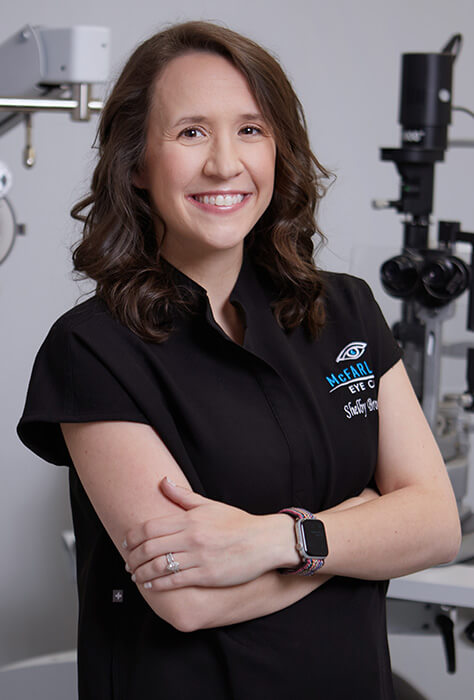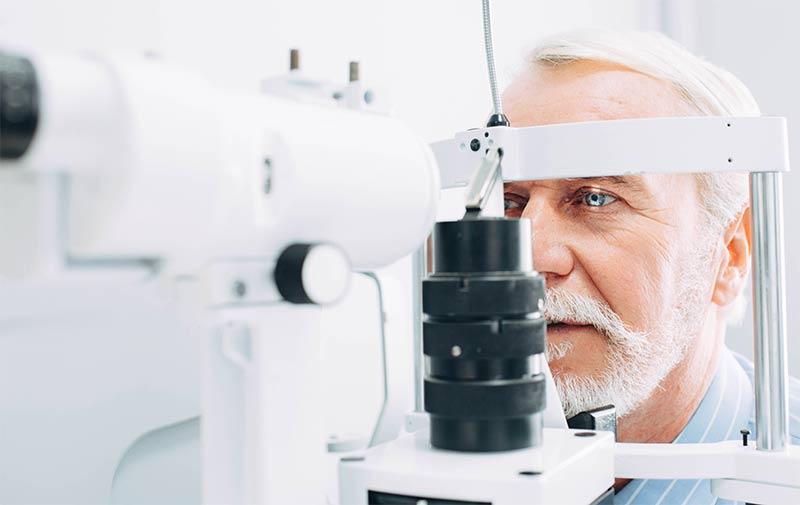

Dry eye syndrome is a chronic eye condition that can cause various symptoms, including irritation, redness, and blurry vision. Dry eye occurs when our eyes do not make enough tears or tears evaporate off the eye too quickly. Tears are essential because they provide nutrients to the eye, keep the eyes moist, and protect the eye from irritants and infection.
Tears are made of three components: oil, water, and mucus. These components help your tears perform duties essential to ensuring that the eye surface is healthy. If one or more of these components are lacking, your tear quality and homeostasis are disrupted, and the surface of your eye may become dry.
At McFarland Eye Care, our eye doctors have the experience and dedication necessary to help find the root cause of your dry eye so that we can tailor a treatment plan for your needs.
Watch the video below to hear from Dr. Brogdon on the symptoms, causes and solutions to Dry Eye Syndrome!
Dry Eye is a multifactorial disease, which means there are many different things that can contribute to the root cause and symptoms.
Here are some of the most common causes of dry eye:
Aging can cause various changes to your anatomy of the eye which can result in decreased tear film or disrupted blinking mechanisms.
Dry eye is more prevalent in women vs men likely due to hormonal changes especially during menopause.
More time spent on screens leads to a decreased blinking rate which reduces the amount of tears we produce and can cause tears to evaporate off the surface.
Some medical conditions, like Rheumatoid Arthritis, Rosacea, Sjogren's syndrome, and other autoimmune disorders, can cause or worsen dry eye.
Certain medications, like antihistamines and decongestants, can contribute to dry eye symptoms.
Changes in seasons or even dry or windy environments can cause changes to how your tears to evaporate.
If you have dry eye, it's important to see an eye doctor so they can diagnose the problem and help you find relief. Dry eye syndrome is a chronic eye condition, meaning that without treatment, you will likely continue to experience symptoms.

During a dry eye evaluation, your eye doctor will perform several diagnostic tests to evaluate your eyes and the surrounding structures.
A very important part of the eye that your eye doctor will look at is the meibomian glands. The meibomian glands are what produce the oil layer of the tear film. Infrared imaging of these glands can detect any changes in the structure or damage to these precious glands.
Your eye doctor will also check your tear evaporation rate, vital dye staining, and thoroughly examine the surface of your eyes with a special microscope known as a slit lamp.
Once your eye doctor can identify and properly diagnose the root cause of your symptoms, they will customize, develop and implement a treatment plan.
There are many lifestyle changes that you can make to help improve your symptoms. Your eye doctor may recommend increasing your use of artificial tears, using warm compresses and lid scrubs, or changing your skincare or makeup products.
If these measurements do not improve your symptoms, your eye doctor may recommend prescription medications or additional in-office treatment.
At McFarland Eye Care, our eye doctors offer the following in-office treatments for dry eye: Microblepharoexfoliation, Radiofrequency (RF), Low Level Light Therapy (LLLT) and Intense Pulsed Light (IPL).
Makeup debris, oil, dead skin, bacteria, and mites can accumulate on your eyelids over time like plaque on your teeth. This treatment involves an in-office deep cleaning of the lid and lashes and exfoliation of the eyelid margins. The products we use are gentle enough to use around the eye and aid in calming and soothing inflammation. They are also powerful enough to remove build up and debris. Patients leave the office feeling refreshed and squeaky clean.
Radiofrequency works by creating heat and the perfect temperature and depth to reach the Meibomian glands and can help unclog glands and reduce lid puffiness. It also helps promote collagen production to tighten skin and reduce inflammation. Patients will be able to create a more balanced tear film and also notice improvement in skin tightness around the eyes which can improve blinking mechanism.
IPL uses a specific wavelength of light to penetrate the skin around the eyelids to decrease inflammation, reduce redness, and even skin tone. It works to treat the root causes of Dry Eye Syndrome and patients will notice improvement in dry eye symptoms and the added benefits of improvement in skin tone. This is the ideal for patients who suffer from rosacea.
LLLT is a comfortable, non-invasive treatment that uses specific wavelengths of light to stimulate the Meibomian glands and reduce inflammation. This therapy helps restore natural tear production and improve gland function over time. LLLT is a great option for patients looking for a gentle yet effective way to manage chronic dry eye symptoms.